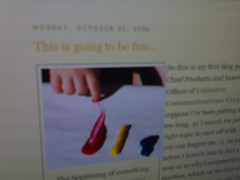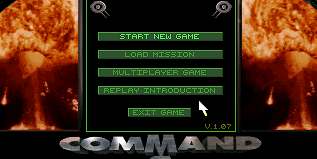Does Static Content Have A Future On The Modern WWW?
Static content. Once the lifeblood of the World Wide Web. Amazing. Now it has been relegated to something of an inconvenience.
Think back to the last truly static page you visited recently – I bet you probably can’t even think of one! Even pages that appear to be static, generally have at least some dynamic part.
So what’s the difference between static and dynamic.
Static vs Dynamic
Static web pages are, well, static! (Yes, sorry, I had to state the obvious!). To go into a bit more detail though, they’re comparable to the digital equivalent of a book. With a book, you pick it up, you read it – and to all intents and purposes that’s it, you’re done. You can’t interact via the book with the author. You can’t leave a comment on a page you don’t like (apart from profanity you might right in pencil on the page if that floats your boat – but that doesn’t count as everyone else with the book can’t see it in their copy!). You can’t vote on a poll in a book. It’s static. Just like a static web page (basically) consists of text and, nowadays, images and multimedia.
Static pages also do include hyperlinks. Now, some people would argue that these are a dynamic feature – as it is a response to a user action that occurs at a user defined time (i.e. the link is followed when it is clicked). However, this would be a misconception to think of it this way. Hyperlinks don’t make a page dynamic – they are still static – think of hyperlinks as the book equivalent of turning the page.
So What Makes a Page Dynamic?
This big questions has quite an easy answer to find. Look around this post. At the top right we have a search bar. The search bar allows you to search the content of this blog. Let’s say you want to search for cupcakes. Now, unfortunately, we’re going to have issues here! Due to the DPS Computing blog only covering technology and computing issues, it is with great sadness that we have to inform you that there hasn’t been any recent technological or computing discoveries due to/because of/including cupcakes (yes, I know, very tragic – we’ll keep our eyes open though! ;)). If you type cupcakes into the search bar and then search – you get no results.
Use the same search bar to search for something techified……. like OS X – and wham bam – you’ve got results. Believe it or not, whether you search for cupcakes or OS X the search results page is the same.
How can that be? Well the search results page is dynamic. So just because the search results page is the same no matter what is searched for, doesn’t mean to say that, on a dynamic page, the content of search results page has to be the same.
Below each of our posts on DPS Computing there is a ‘comments’ box. All registered users and visitors can post in there, share discussion and we can all see what each other is saying. When this post is first posted, the page will load with no comments. If someone leaves a comment, the page will then load with one comment at the bottom of the post (for everyone). It’s the same page that has been loaded – just with different content (aka a dynamic page).
Does Static Content Have a Future?
And that introduction brings us quite nicely onto the million dollar question (yes, yes, I know it should be the million pound question but it just doesn’t have quite the same ring to it!).
Does static content have a future on the Internet? Unfortunately there isn’t just a simple yes or no answer to this question.
Static content does have a future on the Internet – but not independently. Static content on the ‘net used to be the only type of content. Dynamic content was still a few years off at this time – mainly due to the lack of technologies / languages available for the ‘new’ Internet that supported dynamic content, the relatively low spec of computers and the painfully slow bandwidths of Internet connections generally available (56k anyone? How about 16.6k? ;)). At the beginning, even (static) pictures were discouraged due to the technological restrictions. Static content existed in its own static universe on the Internet – it lived independantly.
As time has gone on things have got more dynamic….. but the static constructs (text and images for example), still form the basic building blocks of all web pages. But now the static content is surrounded in a dynamic shell. A blending of the static and dynamic universes has lead to the kind of Internet we have today – useful and resourceful while interesting and interactive.
Interactivity and dynamic features and capabilities of websites are only going to continue to increase – which can only be a good thing for the Internet and its many millions of users. However, the static features that started it all decades ago will still always form a part of the Internet and modern pages – no matter how much dynamic content grows. The static components may become comparatively smaller, but they’ll always be there!



Great article David.
I’ve thought about this before too, and the fact that most websites now make use of client-side technologies like JavaScript – and in a way, many people would consider JavaScript as a way to make web pages dynamic in some form or another. I think to an extent it depends on the context when using the term “dynamic web page”.
Although obviously, web pages have become more advanced, and more complex over time. Many web pages are also dynamic in the sense of a back-end web application dealing with the dynamic functions of a website – search fields, forums, membership systems, etc. – whether that’s with PHP, ASP.NET or another language primarily used server-side.
It surprises me with how advanced many websites are both in terms of user interface and how dynamic websites are. In fact, web apps are a popular think nowadays, like ShiftEdit, Google Docs, and so on.
Thanks Ben :).
Yeah, you’re right. Indeed there are numerous different ways in which a page can be dynamic.
And yeah, especially over the past couple of years things really seem to have steamrollered on and are developing at a much faster pace online :).
Over the past few years we’ve seen applications previously (and solely) desktop based, be replicated on the Interent – such as document editing (as you mentioned with Google Docs), image editing etc.